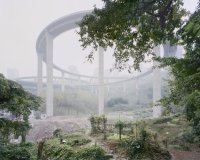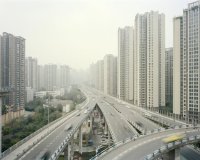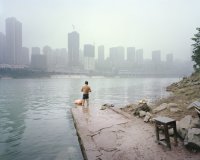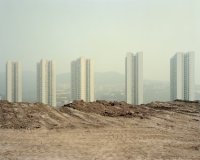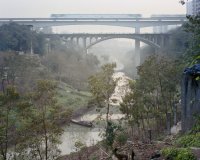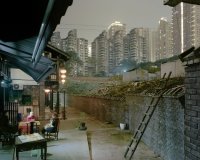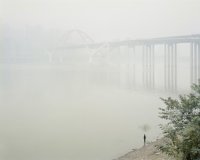Cyrus Cornut
Atelier EXB
Chongqing sur les quatre rives du temps qui passe
30,00 €
2021
HSBC prize for photography
Format 19,5x24,5
104 pages
French English
978236511225
Présentation
Chongqing municipality, People’s Republic of China, population of 34 million.
One of the world’s highest demographic and economic growth rates.
The central urban area of 15 million souls is infused by almost 300 000 newcomers every year.
Chongqing, the “Mountain City,” at the confluence of the Yangtze and Jialang Rivers, struggles to break through the fog that covers it all year long.
Heir to the displaced from the Three Gorges dam and daughter to the Beijing authorities – who upgraded her to a municipality, raising her up to the same heights as her big sisters on the East coast – Chongqing has developed at a dizzying speed. Urban forms and infrastructure have sprung up, gravity-defying, embracing the shorelines of its four banks, each of them steeply carved out by the current of the water. The speed of urbanization has outperformed overtaken the slow rhythm of the fishermen, the erosion of the rivers, the powerful hatching of the mountains.
The uninterrupted dance of the cranes and the excavators stack people ever higher in an unsettling quickness. No obstacle remains to stop the skyscrapers from surging up. They reproduce themselves almost identically, like metastases. The transport networks cross the water, pierce through the rock, and climb the hills, defiant of the power of the elements. The river has become the artery that the makes beat an economic heart that is resolutely turned towards the economic conquest of the West by way of the new silk road.
Only the banks, almost wild, resist, remaining allied with the river and its caprices. People sitting on its embankments watch it meander, watch their sightlines get blocked out and its banks grow thicker. Here and there they still cultivate a few food-producing gardens while they wait fatalistically for the last bits of bare land to disappear.

